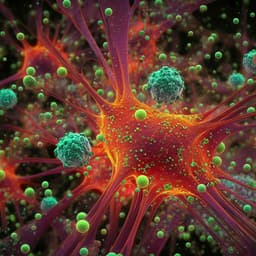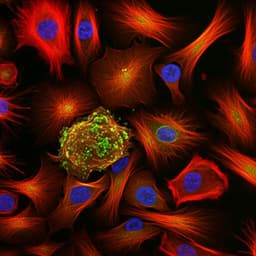
Medicine and Health
Single-cell sequencing unveils key contributions of immune cell populations in cancer-associated adipose wasting
J. Han, Y. Wang, et al.
This study explores the intriguing role of chronic inflammation and immune cell dysregulation in cancer-associated adipose wasting (CAC), shedding light on the specific changes in adipose progenitors and immune cells. Conducted by Jun Han, Yuchen Wang, Yan Qiu, Diya Sun, Yan Liu, Zhigang Li, Ben Zhou, Haibing Zhang, Yichuan Xiao, Guohao Wu, and Qiu Rong Ding, this research reveals how activated immune responses impact adipose tissue during CAC.
~3 min • Beginner • English
Related Publications
Explore these studies to deepen your understanding of the subject.







